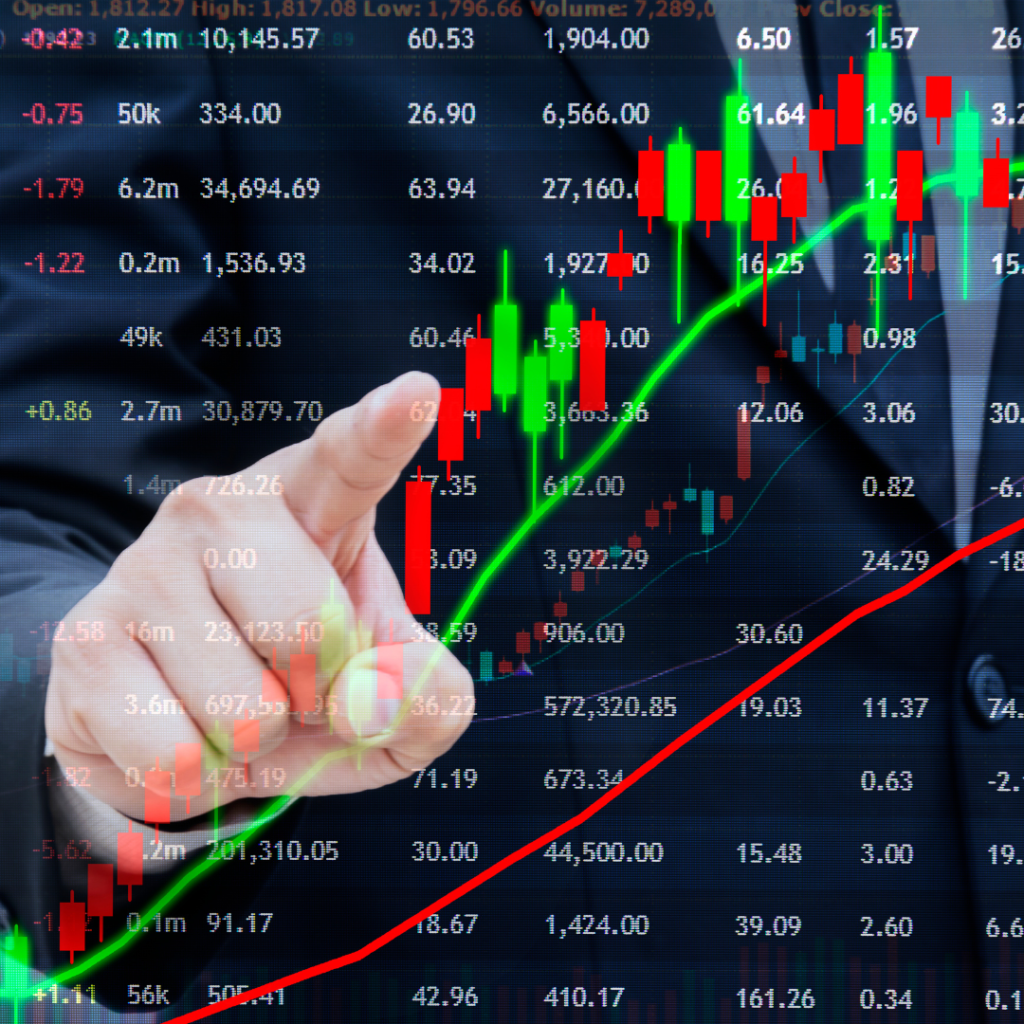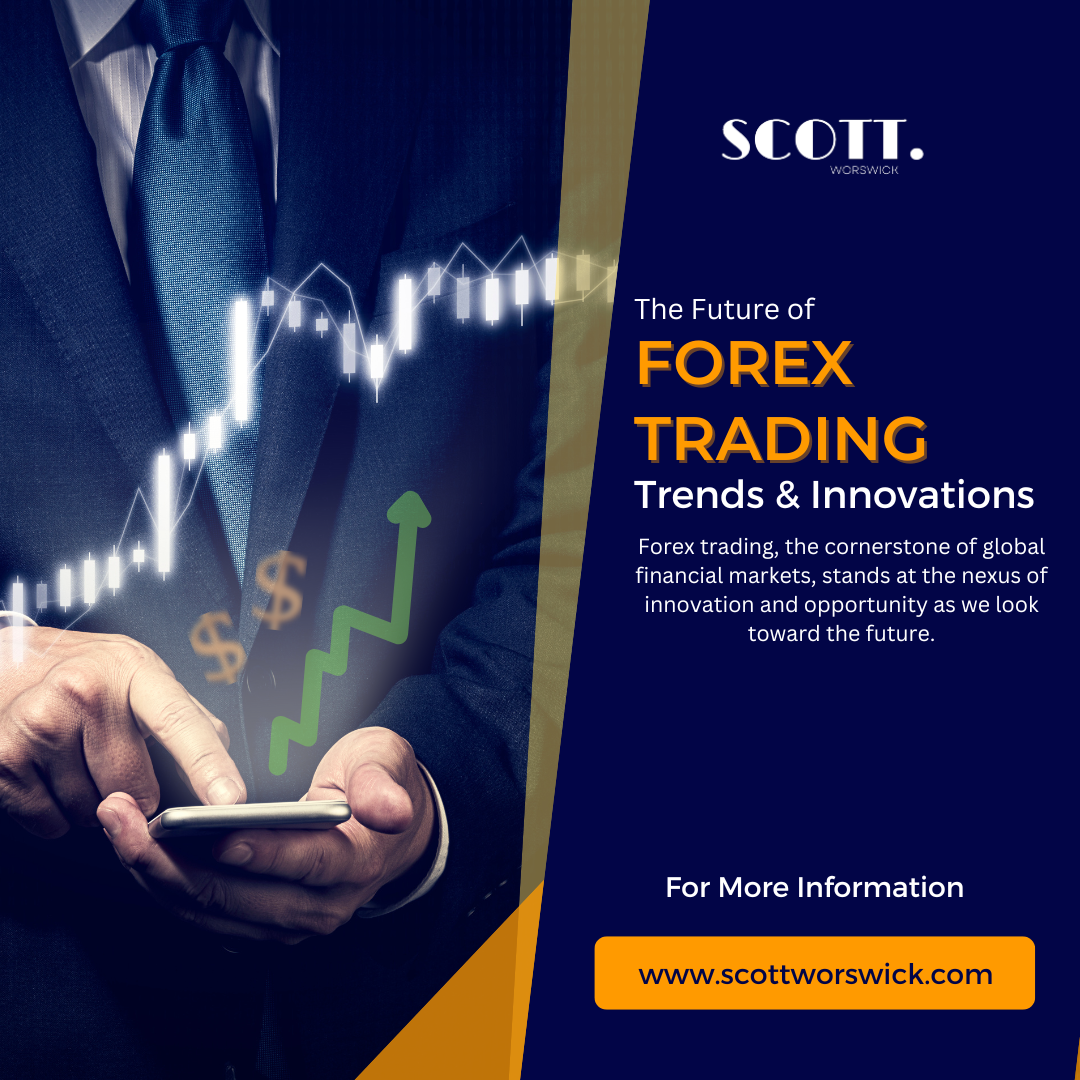Forex trading, the cornerstone of global financial markets, stands at the nexus of innovation and opportunity as we look toward the future. With advancements in technology and shifts in market dynamics, the landscape of forex trading is undergoing a profound transformation. Traders and investors are increasingly turning to cutting-edge tools and strategies to navigate the complexities of the forex market and capitalize on emerging trends. In this introductory exploration, we delve into the evolving world of forex trading, examining key trends and innovations that are reshaping the way we engage with currency markets.
In recent years, the advent of artificial intelligence (AI) and machine learning has revolutionized the practice of forex trading. These technologies empower traders with unprecedented insights and capabilities, allowing for the analysis of vast amounts of data and the execution of trades with greater precision and efficiency. AI-powered trading systems are enabling traders to stay ahead of market movements, identify profitable opportunities, and mitigate risks in real time. As AI continues to evolve, it promises to further enhance the effectiveness and sophistication of forex trading strategies, paving the way for a new era of predictive analytics and automated decision-making.
Additionally, the rise of blockchain technology has introduced new possibilities for transparency, security, and efficiency in forex trading. Blockchain’s decentralized ledger system offers a tamper-proof record of transactions, reducing the risk of fraud and manipulation in the forex market. Moreover, blockchain-based platforms are facilitating faster settlement times and lower transaction costs, while also enabling the development of innovative trading instruments such as tokenized assets and smart contracts. As blockchain technology continues to mature, it holds the potential to revolutionize the way forex trading is conducted, ushering in a new era of trust, transparency, and accessibility for traders around the world.
Table of Contents
1. Artificial Intelligence and Machine Learning
Artificial Intelligence (AI) and machine learning have emerged as game-changers in the realm of forex trading, offering traders unprecedented insights and capabilities to navigate the dynamic currency markets. These technologies empower traders with sophisticated algorithms that can analyze vast amounts of market data, identify patterns, and make informed trading decisions in real time. By leveraging AI-powered tools, forex traders can gain a competitive edge by staying ahead of market movements and executing trades with greater precision and efficiency. From predictive analytics to automated trading systems, AI is revolutionizing the way traders engage with the forex market, enabling them to capitalize on opportunities and mitigate risks more effectively than ever before.
Moreover, machine learning algorithms are continuously evolving and adapting to changing market conditions, refining their strategies based on past performance and new data inputs. This adaptive nature allows machine learning-based trading systems to improve over time, becoming more accurate and reliable in their predictions. As a result, forex traders can rely on AI-driven models to provide valuable insights and recommendations, guiding their decision-making process and enhancing their overall trading performance. With machine learning at their disposal, traders can navigate the complexities of the forex market with greater confidence and success, tapping into new opportunities and optimizing their trading strategies for maximum profitability.
Furthermore, AI and machine learning are not only transforming how individual traders approach forex trading but also reshaping the broader landscape of the financial markets. Institutional investors and hedge funds are increasingly incorporating AI-driven trading strategies into their portfolios, driving greater liquidity and efficiency in the forex market. As these technologies become more pervasive, we can expect to see further advancements in algorithmic trading, quantitative analysis, and risk management practices across the industry. The integration of AI and machine learning into forex trading is not merely a trend but a fundamental shift that is redefining the future of financial markets, ushering in a new era of innovation, opportunity, and disruption.
2. Algorithmic Trading

Algorithmic trading has emerged as a cornerstone of the future of forex trading, leveraging advanced computational algorithms to execute trades automatically based on predefined parameters. This innovative approach allows traders to capitalize on opportunities in the forex market with unparalleled speed and precision. By utilizing algorithms, traders can analyze market data, identify patterns, and execute trades in real time, minimizing human error and emotion-driven decisions. Algorithmic trading strategies range from simple to highly complex, offering traders a diverse array of tools to navigate the ever-changing landscape of forex trading with confidence and efficiency.
In the realm of forex trading, algorithmic strategies are increasingly gaining traction among traders seeking to gain a competitive edge in the market. These algorithms can be tailored to suit various trading styles and objectives, whether it be high-frequency trading, trend-following, or statistical arbitrage. By harnessing the power of algorithms, traders can automate their trading processes, allowing for round-the-clock monitoring of the forex market and rapid execution of trades in response to changing market conditions. Algorithmic trading empowers traders to capitalize on fleeting opportunities and react to market movements with unparalleled speed and precision, enhancing their ability to generate profits in the dynamic world of forex trading.
Moreover, algorithmic trading has democratized access to the forex market, enabling traders of all levels of expertise to participate in trading activities with greater efficiency and effectiveness. Through the use of algorithmic trading platforms and software, even novice traders can leverage sophisticated trading strategies and techniques previously available only to institutional investors. This democratization of forex trading empowers individuals to take control of their financial futures and capitalize on the vast opportunities presented by the global currency markets. As algorithmic trading continues to evolve and become more accessible, it is poised to play an increasingly integral role in shaping the future of forex trading for traders around the world.
3. Blockchain Technology for Forex Trading

Blockchain technology has emerged as a transformative force in the realm of forex trading, offering unparalleled levels of transparency, security, and efficiency to market participants. At its core, blockchain is a decentralized ledger system that records transactions across a network of computers in a tamper-proof and transparent manner. This innovative technology has the potential to revolutionize various aspects of forex trading, from transaction settlement to trade execution. By leveraging blockchain technology, forex traders can benefit from faster settlement times, reduced transaction costs, and enhanced transparency in their trading activities.
One of the key advantages of blockchain technology in forex trading is its ability to streamline the settlement process and mitigate counterparty risk. Traditional forex transactions often involve multiple intermediaries and clearinghouses, leading to delays and increased costs. With blockchain-based platforms, transactions can be settled in near real-time, eliminating the need for intermediaries and reducing the risk of settlement failures. Additionally, blockchain’s transparent and immutable nature ensures that all transactions are recorded accurately and securely, providing traders with greater confidence in the integrity of the forex market.
Moreover, blockchain technology has opened up new possibilities for innovation in forex trading, enabling the development of novel trading instruments and mechanisms. For example, tokenized assets represent a digital representation of real-world assets such as currencies, commodities, or securities, which can be traded on blockchain-based platforms. These tokenized assets offer increased liquidity, fractional ownership, and 24/7 trading opportunities for forex traders. Furthermore, smart contracts, self-executing contracts with the terms of the agreement directly written into code, can automate various aspects of forex trading, such as trade execution, settlement, and risk management, further enhancing efficiency and reducing operational costs.
As blockchain technology continues to mature and gain widespread adoption, its impact on the future of forex trading is poised to be profound. By providing greater transparency, security, and efficiency to the forex market, blockchain has the potential to revolutionize how traders engage with currencies and other financial instruments. As traders and financial institutions increasingly recognize the benefits of blockchain technology, we can expect to see continued innovation and integration of blockchain-based solutions in the forex trading industry, shaping the future of trading in unprecedented ways.
4. Mobile Trading
The advent of mobile trading has ushered in a new era of accessibility and convenience for participants in the forex trading market. With the widespread proliferation of smartphones and tablets, traders now have the ability to access real-time market data, execute trades, and manage their portfolios from virtually anywhere in the world. Mobile trading apps and platforms offer a user-friendly interface that caters to the needs of both novice and experienced traders, providing a seamless trading experience on the go. This flexibility allows traders to stay connected to the forex market at all times, enabling them to capitalize on opportunities as they arise and react swiftly to changing market conditions.
Moreover, mobile trading has democratized access to the forex market, breaking down barriers to entry and empowering individuals from diverse backgrounds to participate in trading activities. With just a few taps on their mobile devices, traders can open accounts, deposit funds, and start trading currencies within minutes. This accessibility has democratized the forex trading landscape, enabling a new generation of traders to enter the market and pursue their financial goals with ease. Additionally, mobile trading platforms often offer a wide range of educational resources, analytical tools, and market insights to help traders make informed decisions and navigate the complexities of the forex market effectively.
Furthermore, mobile trading apps and platforms are continuously evolving to meet the changing needs and preferences of forex traders. Developers are constantly introducing new features and functionalities to enhance the mobile trading experience, from advanced charting tools and technical indicators to social trading integration and algorithmic trading capabilities. These innovations enable traders to stay ahead of the curve and adapt to the dynamic nature of the forex market with confidence. As mobile technology continues to advance, we can expect to see further enhancements in mobile trading platforms, making forex trading more accessible, efficient, and user-friendly than ever before.
5. Regulatory Changes and Compliance
In the realm of forex trading, regulatory changes and compliance play a pivotal role in shaping the future landscape of the market. Regulatory bodies worldwide continuously monitor and adapt their frameworks to maintain market integrity, protect investors, and ensure fair and orderly trading. These regulatory changes often introduce new requirements and standards that forex traders and brokers must adhere to, ranging from transparency and reporting obligations to risk management and capital adequacy requirements. Staying abreast of these regulatory developments is crucial for participants in the forex market to mitigate risks, avoid penalties, and maintain trust and confidence in the market.
Moreover, regulatory changes in the forex trading industry are driven by evolving market dynamics, technological advancements, and global events. For example, the emergence of high-frequency trading (HFT) and algorithmic trading has prompted regulators to introduce measures aimed at ensuring market stability and preventing market manipulation. Similarly, geopolitical events, economic crises, and technological disruptions can also prompt regulatory changes to address emerging risks and challenges in the forex market. As such, forex traders and brokers must remain vigilant and adaptable to comply with evolving regulatory requirements and safeguard the integrity of the market.
Furthermore, compliance with regulatory requirements is essential for fostering trust and confidence among forex market participants. By adhering to regulatory standards and best practices, forex brokers demonstrate their commitment to transparency, fairness, and investor protection. This, in turn, enhances market credibility and attracts investors seeking a secure and regulated trading environment. Compliance with regulatory standards also helps mitigate operational and reputational risks for forex brokers, ensuring their long-term viability and sustainability in the competitive forex trading industry.
In conclusion, regulatory changes and compliance are integral components of the future of forex trading, shaping market dynamics and influencing the behavior of market participants. As regulatory bodies continue to evolve their frameworks to address emerging risks and challenges in the forex market, traders and brokers must stay informed and proactive in complying with regulatory requirements. By embracing regulatory changes and adopting best practices in compliance, forex market participants can contribute to a safer, more transparent, and resilient trading environment, paving the way for sustainable growth and innovation in the future of forex trading.
Conclusion
In conclusion, the future of forex trading is characterized by a convergence of technological innovation, regulatory adaptation, and evolving market dynamics. With advancements in artificial intelligence, blockchain technology, mobile trading, and algorithmic strategies, forex traders are equipped with unprecedented tools and opportunities to navigate the complexities of the market with confidence and efficiency. These innovations not only streamline trading processes but also democratize access to the forex market, empowering individuals from diverse backgrounds to participate in trading activities and pursue their financial goals.
As forex trading continues to evolve, market participants must remain vigilant and adaptable to emerging trends and regulatory changes. Compliance with regulatory requirements is paramount for maintaining market integrity, safeguarding investor interests, and fostering trust and confidence among market participants. By embracing regulatory changes and adopting best practices in compliance, forex traders and brokers can contribute to a safer, more transparent, and resilient trading environment, laying the foundation for sustainable growth and innovation in the forex market.
Looking ahead, the future of forex trading holds immense promise for those who are willing to embrace innovation, adapt to change, and stay ahead of the curve. With advancements in technology and shifts in market dynamics, the forex market is poised for further transformation and disruption. By leveraging cutting-edge technologies, adopting innovative trading strategies, and staying informed about regulatory developments, forex traders can position themselves for success in the dynamic and ever-evolving world of forex trading, seizing new opportunities and realizing their financial aspirations.





Pingback: Forex Trading for Beginners: A step-by-step guide for beginners on how to get started with Forex trading, including opening an account, executing trades, and managing risk -